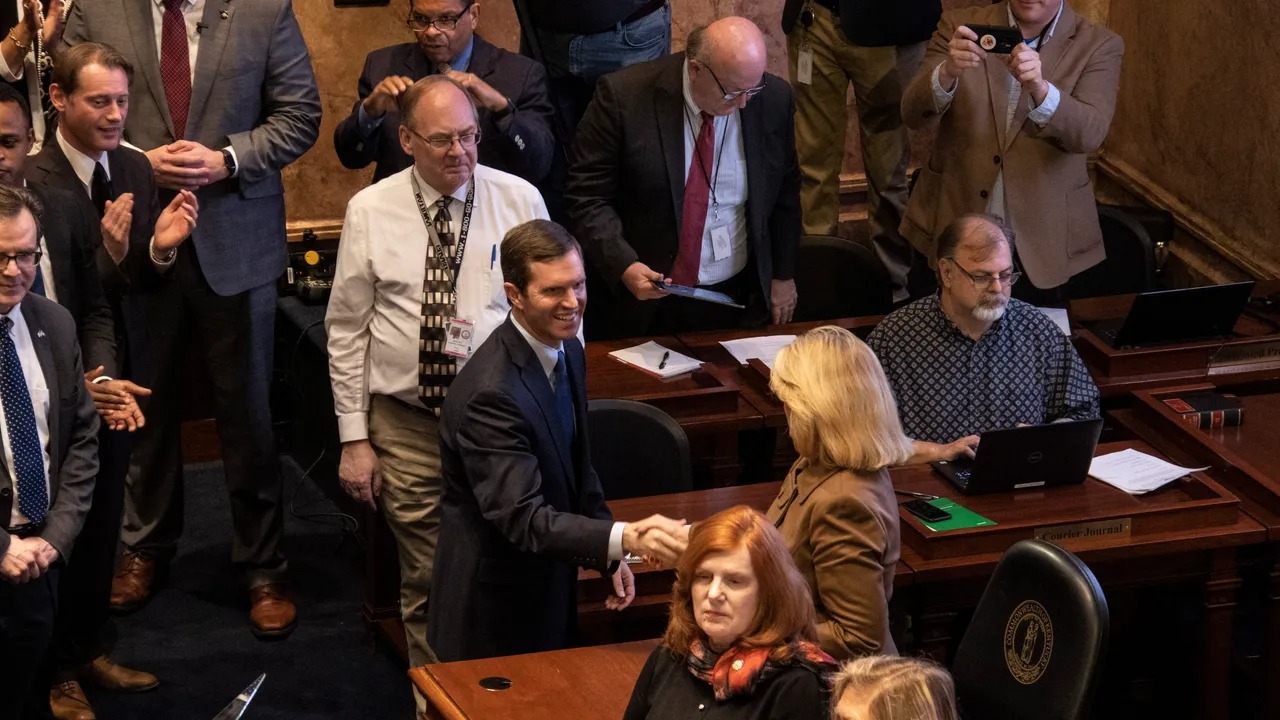In Kentucky, Republican legislators have introduced a series of bills to reduce the governor’s powers, a move Governor Andy Beshear attributes to political maneuvering.
This battle for control marks a continuation of the tension between the state’s legislative and executive branches, particularly since the election of a Democratic governor in a state with a Republican-controlled General Assembly in 2019.
One of the key proposals, House Bill 4, seeks to amend the constitution to allow the legislature to convene special sessions, a prerogative currently held by the governor.
GOP House Members (Credits: AP News)
Another significant piece of legislation, Senate Bill 8, aims to change the appointment process for the Kentucky Board of Education to a partisan election system, altering the governor’s current authority to appoint board members.
This follows a law enacted last year, overriding Beshear’s veto, which granted the Senate power to confirm the state education commissioner.
The discord between GOP lawmakers and Governor Beshear has been particularly pronounced since the onset of the COVID-19 pandemic, with the Kentucky Supreme Court upholding laws in 2021 that curtailed the governor’s emergency powers.
Given the Republican supermajorities in both legislative chambers, Beshear faces challenges in asserting his executive authority.
Governor Beshear criticized the legislative efforts to limit gubernatorial power, suggesting that such actions are driven by partisan interests rather than the welfare of Kentuckians.
He expressed concern that these legislative moves distract from addressing more pressing issues like public safety, education, and infrastructure.
Despite these criticisms, Republican legislators argue that their bills aim to democratize power by involving Kentuckians more directly in governance.
They cite previous instances where legislative actions have sought to balance executive power, regardless of the governor’s party affiliation. However, some speculate that if a Republican assumed the governorship, many of the currently restricted powers might be reinstated.
The evolving dynamics between Kentucky’s legislative and executive branches reflect a broader trend of increasing legislative independence, a shift from historical patterns where the governor wielded significant influence over state policy.
This change has been gradual, with key milestones including constitutional amendments in 1992 that allowed governors to serve consecutive terms and altered the lieutenant governor’s role.
As these bills progress, they highlight the ongoing debate over the appropriate balance of power within the state government, which resonates with voters and shapes the political landscape in Kentucky.
